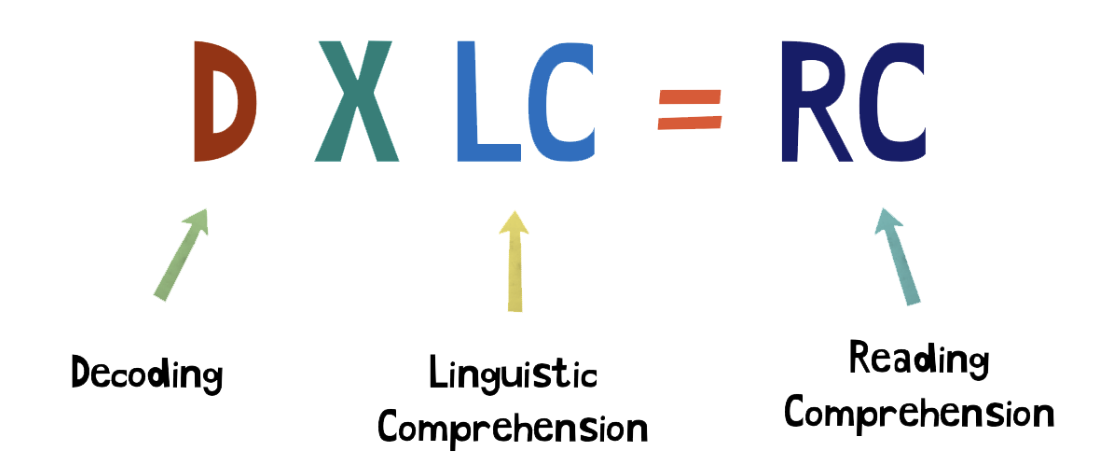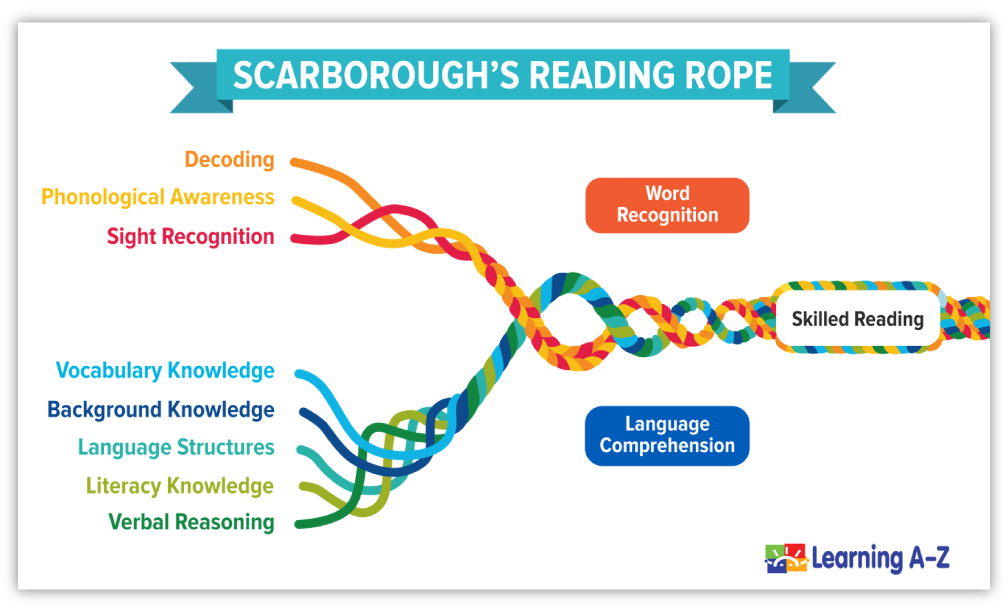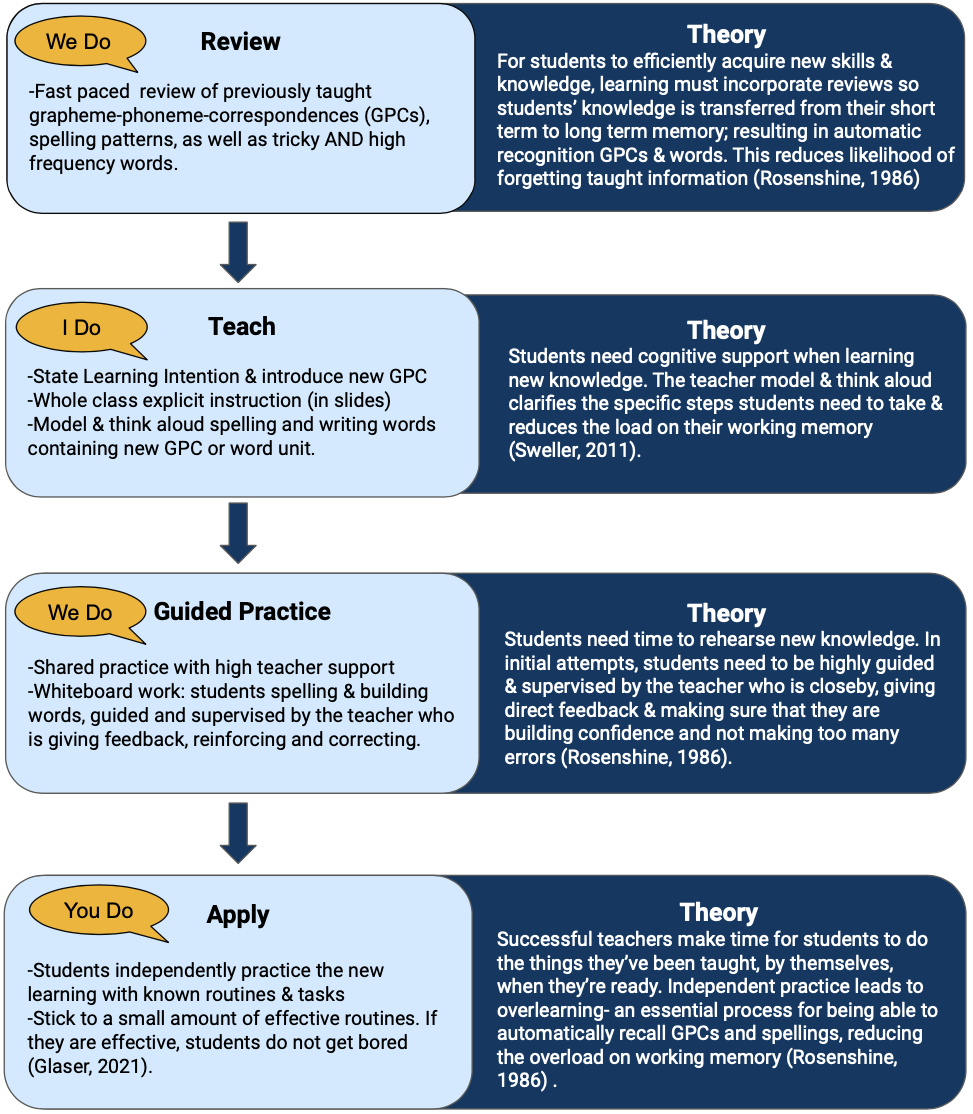Reading is the comprehension of visual symbols that represent spoken language. It is a complex cognitive process that requires our brains to make new connections between the parts that were designed to enable us to develop oral language and process visual information. Learning to read requires explicit teaching in order for our brains to make those new connections. At Aberfeldie, we centre our literacy structure around evidence based theories.
The Simple View of Reading
The Simple View of Reading explains that comprehension is the product of two sets of skills: decoding and linguistic (language) comprehension. Decoding refers to the ability to translate written letters or symbols into sounds or words, while linguistic or language comprehension refers to the ability to understand the meaning of those words and sentences. According to the SVR, difficulties with either one of these factors will result in comprehension difficulties.

Scarborough's Reading Rope is a framework that builds on the Simple View of Reading (SVR) and provides a way for teachers to conceptualise the complex process of reading. It is based on the idea that skilled reading can be broken down into different ‘strands’ of proficiency, each of which is linked to specific cognitive and linguistic skills. The two strands are Word Recognition and Language Comprehension. At Aberfeldie, we use the Reading Rope framework to design reading instruction within each year level. For intervention, we use the rope to identify the specific strands that students are struggling with and then focus on instruction that targets those skills.

Spelling lessons follow the below instructional routine. The consistency of this instructional routine reduces the cognitive load on working memory because it shifts the balance of students’ attention from the “how” of their learning to the “what” of their learning. When the instructional routine is familiar, working memory is freed up to process new information. Each classroom clearly defines these routines to support student engagement and behaviour, whilst enhancing learning (Kelemanik, Lucenta, & Creighton, 2016).

Comprehension focuses on understanding the meaning and intent of a given text. For emergent readers, the focus is on listening comprehension. Once students become proficient in decoding and language comprehension, the focus shifts to reading comprehension, where meaning is derived from print.
Comprehension at Aberfeldie is based on authentic, rich literature that often links in with Inquiry units for deeper content and world exploration. Texts are carefully selected to develop background knowledge to allow for a deeper understanding of the world and discipline that they are reading. Cohorts have access to sets of texts, allowing deep exploration of the literature, exploring aspects across the week and assisting students to understand the meanings of words, sentences and whole texts, across multiple contexts. By understanding cohesive devices, sentence structure, syntax and genre, students can be scaffolded to make meaning at all levels and then apply these skills as writers.
The Key Reading Comprehension Strategies:
(Oakhill, Cain & Elbro, 2015; Rosenshine & Meister, 1993).
At APS, writing instruction is embedded in content, with students writing about what they are learning to support student comprehension and deep content knowledge. Writing lessons are usually directly linked to the rich & authentic literature, using the knowledge they have learnt from comprehension lessons, including writing techniques, genres, and literary devices. Writing skills are also targeted through the reading material, including grammar and syntax, and are explicitly taught.
Handwriting is explicitly and purposefully taught as a fundamental skill at APS. Learning moves from Foundation, where students learn ‘letter formation patterns,’ through to Year 7, where students develop a ‘personal handwriting style that is legible, fluent and automatic and supports writing for extended periods’ (VCAA, 2017). The aim at Aberfeldie Primary School is for the skill of handwriting to become automated to free up working memory for composing texts, developing ideas and increasing the quality of their content.
The teaching of handwriting at Aberfeldie Primary School is based on the following key principles: